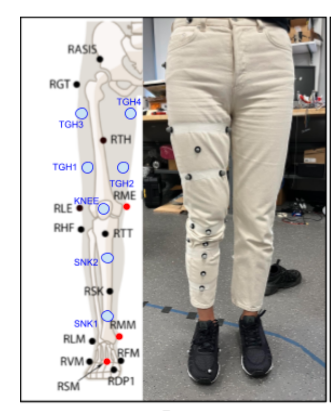The Soft Exosuit for Spinal Muscular Atrophy (SESMA) is an assistive device designed to aid ambulatory patients with Spinal Muscular Atrophy (SMA) developed by Iota Delta Chapter of HKN at the Stevens Institute of Technology in conjunction with Stevens Institute of Technology. The goal of this device is to improve the patient’s ability to perform sit-to-stand tasks while being minimally obtrusive.
SMA mainly affects proximal muscles such as the muscles that flex the hip and extend the knee. This selective muscle weakness makes it difficult for SMA patients to walk, get up from a chair, and climb stairs as they mature.
A new wearable technology meeting these needs has the potential to enhance the quality of life of these individuals and their ability to walk. The SESMA is designed to do so. SESMA fills gaps that typical ambulatory aids such as ankle-foot orthoses (AFOs), customized semi-rigid footwear inserts, and crutches have active support, and call for movements to compensate. Existing powered devices are also heavy and bulky, which is not ideal for movement. SESMA has been created to combat these issues.
The device has been created to be lightweight, semi-active, and focus on knee extension when someone goes from sitting to standing. SESMA is designed to be more comfortable than other solutions as well.
The SESMA itself is similar to a pair of compression pants, with a cable that runs down the back to a small actuation unit. The movement of sitting activates the device, using force to compress a spring located in the actuation unit of the exosuit with a small pulley/drum. The gravitational potential energy is converted into elastic potential energy. Once the user sits down, the complete clutch disengages the pulley from the spring.
For the standing motion, a different series of actions occur. When the wearer goes to stand, the cable clutch is engaged and the motor clutch is disengaged. Then, the spring exerts a tensile force on the exosuit cable. The routing path of the exosuit cable is optimized so that a tensile force in the cable generates moments about the hip and knee articulations, which extend the two joints, helping the wearer stand up. When the motion is completed, the pulley clutch is disengaged so that it does not impede the user’s motion.
The sustainability of this project relies on the team webpage. The website is a resource for users. The code and software will be shared with anyone interested in continuing the project. The team’s advisers will also be responsible for the maintenance of the project.
This project was made possible by a grant of $4,000.00 as part of EPICS at IEEE’s Access and Abilities Competition.

